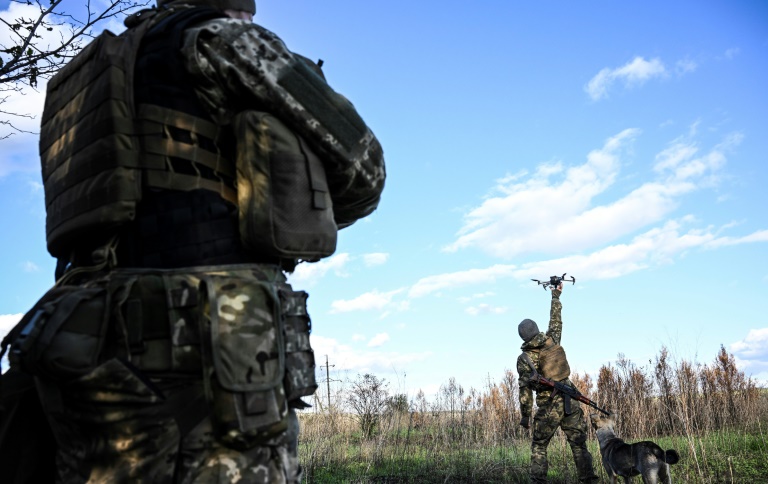Ukrainian soldiers are using drone warfare in the Donbas
For young Ukrainian geeks, making drones — for reconnaissance or destruction — in a house basement near the Donbas frontline is “new generation” guerrilla warfare.
In dim light, the 20-somethings busily piece together electronic components spread out on tables, with the help of laptops and documents, while artillery fire thuds in the background.
Next the repair room next door -– a laundry room before the war — drones are patched up using spare parts taken from aircraft damaged “in battle” against the Russians.
In the garden shed meanwhile, a 19-year-old, whose nom de guerre is Varnak, transforms grenades designed for grenade launchers into bombs to be dropped from drones.
You just add fins to them and change the detonation system, he tells AFP, smiling.
“I manage explosives here in my section… We work on grenades and create homemade explosive objects”, says the young man, who joined the unit after responding to an announcement on Twitter.
He inscribes personalised messages for the enemy on the miniature bombs, including “Victory — and happy birthday!” and “People who live without freedom have bad taste”.
In the house garage, a platform covered with electronics is mounted on four wheels where the team puts finishing touches to a kamikaze drone able to carry an anti-tank mine, or any other type of explosive.
A heavy machine gun waits meanwhile in the corner to be transformed into a robotic firing station.
– ‘Volunteers’ –
Aktor (“Actor” in Ukrainian) was a student at the Igor Sikorsky Technical University in Kyiv when Russia launched its invasion in February. Today, he wears a uniform and works on “robotics” to perfect kamikaze drones.
For him, these technologies can make a difference in the conflict in Ukraine “because the current war … is a new generation war”.
“It is no longer people with weapons who wage war but robotic vehicles, with a very high technical level”, says the 22-year-old.
“Why should one soldier shoot another when you have a robot that can deliver a ton of explosives to an ammunition dump?” he asks.
The group’s founder and leader, Zmiy (“Snake” in Ukrainian), is a bearded veteran of the conflict that began in 2014 in the Donbas, eastern Ukraine.
Zmiy, who wears rimmed glasses and a baseball cap decorated with a US flag, says the group comprises about 40 men and women.
Its core team are veterans like him.
“All the others who build and invent devices joined us via Twitter. They are volunteers,” he tells AFP.
A short distance from their base and less than two kilometres (1.2 miles) from the Russian lines, Mikho the navigator and 11 the pilot prepare a drone for a bomb drop on Russian positions.
Amid constant artillery exchanges, the two men attached a bomb under the drone, a US-made model commercially available for around 3,000 euros ($2,900).
Guided by Mikho, 11 observes the Russian positions on his screen. Then he releases the bomb, which falls vertically and crashes down, exploding in a cloud of smoke.
Immediately, the Russian soldiers’ assault rifles crackle. The Russians try to destroy the device, which hovers about 300 metres (984 feet) above them. But the drone return to the Ukrainian side unscathed.









